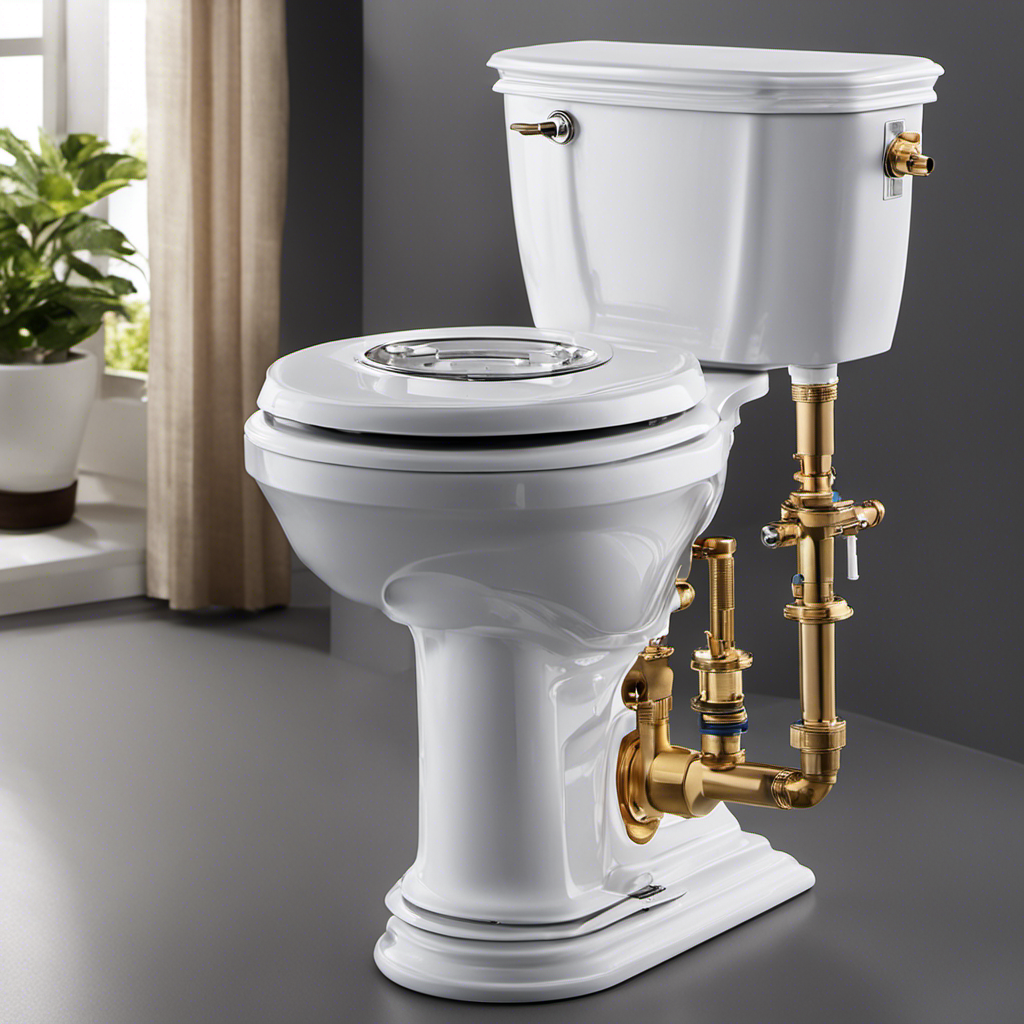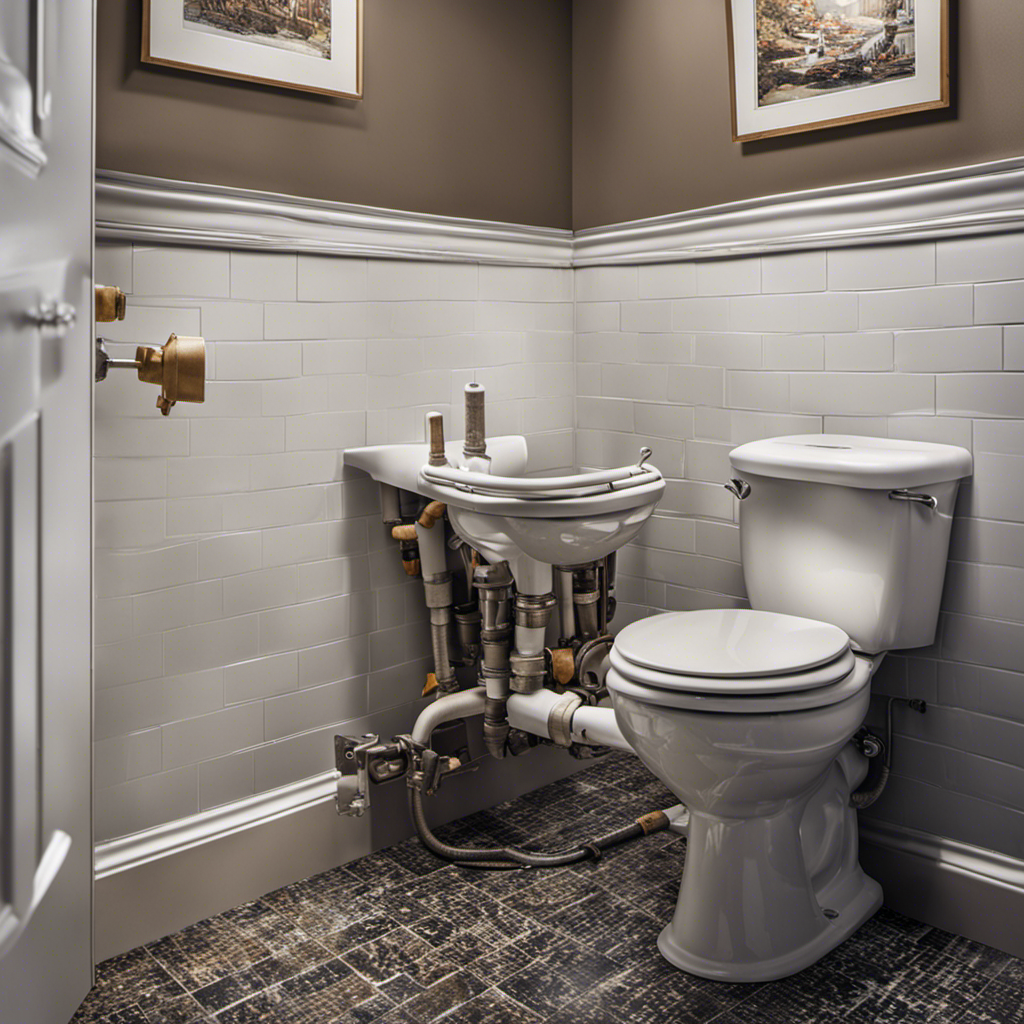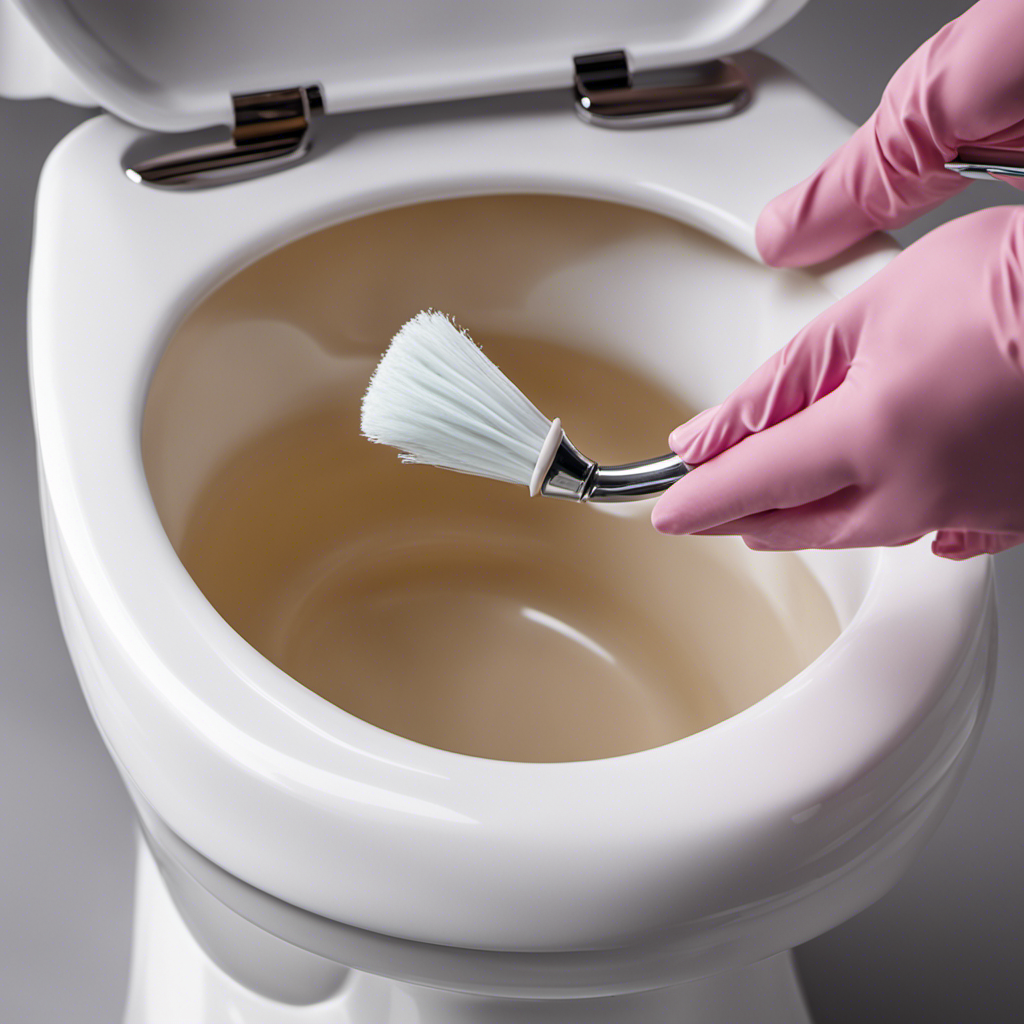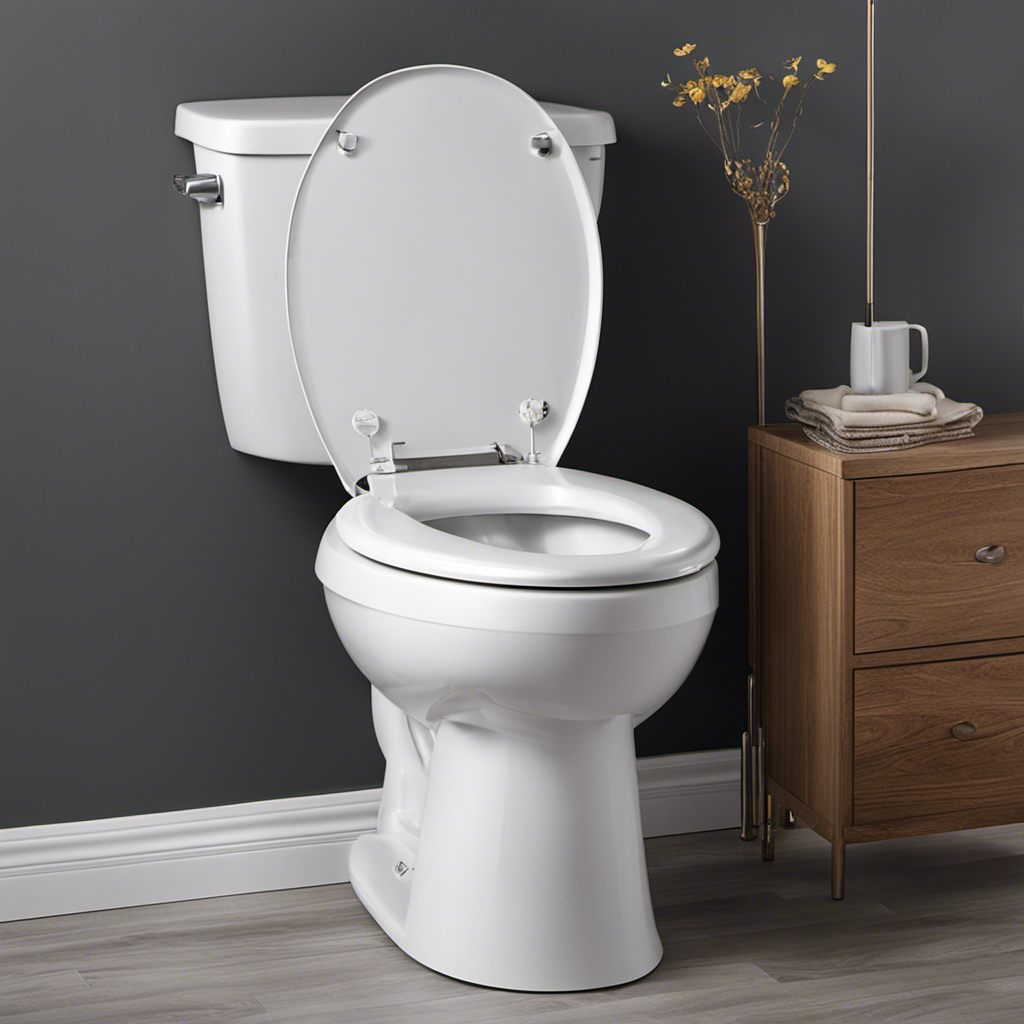Have you ever wondered how a toilet fill valve works?
Well, let me take you on a journey into the inner workings of this essential bathroom component.
Picture yourself in a bathroom, the sound of running water filling the air.
As you flush the toilet, the fill valve springs into action, regulating the flow of water into the tank.
Through a combination of ingenious components, such as the float, diaphragm, and valve seat, the fill valve ensures a steady and efficient refill every time.
In this article, we will delve into the intricacies of the toilet fill valve’s operation and even troubleshoot common issues you may encounter.
Key Takeaways
- The float in a toilet fill valve monitors the water level in the tank and signals the valve to stop water flow, preventing overflow.
- The diaphragm in a toilet fill valve expands to control water flow and acts as a barrier between the water supply and tank. Regular inspection and cleaning prevent leaks.
- The valve seat in a toilet fill valve regulates water flow and ensures a tight seal to prevent leaks. Regular inspection and cleaning are necessary to maintain its functionality.
- Troubleshooting common issues with toilet fill valves includes checking and adjusting the water level, cleaning debris from the valve, and considering upgrading to a newer fill valve model. Regular maintenance is important in preventing these issues.
Different Components of a Toilet Fill Valve
The toilet fill valve consists of various components that work together to regulate the water flow. These components include the float, the valve assembly, and the refill tube.
The float is responsible for monitoring the water level in the tank. When the water level drops, the float lowers, causing the valve assembly to open and allow water to enter the tank. Once the water level reaches a certain point, the float rises, closing the valve assembly and stopping the water flow.
To ensure optimal water efficiency and prolong the lifespan of your toilet fill valve, regular maintenance is essential. This includes checking for leaks, cleaning the valve assembly and refill tube, and adjusting the float if necessary.
Understanding the Function of the Float in a Toilet Fill Valve
When the float is raised, it signals the valve to stop the water flow into the toilet tank. The float is a small, hollow plastic or metal ball attached to the fill valve assembly.
As water fills the tank, the float rises along with the water level. When the water reaches a certain level, the float reaches its maximum height and triggers the valve to close, stopping the water flow. This mechanism ensures that the water level in the tank doesn’t exceed a certain point.
If the water level is too low or too high, it can be adjusted by modifying the position of the float. This can be done by either bending the float arm or adjusting the float adjustment screw. Proper float adjustment is crucial for the efficient functioning of the toilet fill valve.
- The float rises with the water level
- It signals the valve to stop the water flow
- Prevents water from overflowing the tank
- Float adjustment allows for proper water level control
The Role of the Diaphragm in Regulating Water Flow in a Toilet Fill Valve
As water fills the tank, the diaphragm expands to control the flow of water. The diaphragm is a crucial component of the toilet fill valve, responsible for regulating the water level inside the tank.
It acts as a barrier between the incoming water supply and the tank, ensuring that the water does not overflow. Proper maintenance of the toilet fill valve is essential to ensure its optimal functionality.
Over time, the diaphragm may become worn or damaged, leading to leaks or inconsistent water levels. Regular inspection and cleaning of the diaphragm can help prevent such issues.
To adjust the water level in a toilet fill valve, locate the adjustment screw on top of the valve and turn it clockwise to decrease the water level or counterclockwise to increase it.
Exploring the Working Mechanism of the Valve Seat in a Toilet Fill Valve
Water enters the tank through the valve seat and is then controlled by the diaphragm. The valve seat is an essential component of the toilet fill valve, responsible for regulating the flow of water into the tank. It is a circular opening that allows water to enter from the supply line.
Here are some key points about the valve seat:
- Positioned at the bottom of the fill valve assembly.
- Made of durable materials like plastic or brass.
- Ensures a tight seal to prevent leaks.
- Can become worn or damaged over time, requiring maintenance or replacement.
Toilet fill valve maintenance is crucial for optimal performance. Regular inspection and cleaning of the valve seat can help prevent issues such as leaks or inconsistent filling. Upgrading to a newer fill valve model offers several benefits, including improved water efficiency and quieter operation. Additionally, newer models often feature adjustable settings, allowing you to customize the water level in the tank.
Overall, a well-maintained and upgraded toilet fill valve ensures efficient and reliable functionality in your bathroom.
Troubleshooting Common Issues With Toilet Fill Valves
If you’re experiencing issues with your toilet’s fill valve, here are some common troubleshooting steps you can take.
First, check if the water level in the tank is too high or too low. To adjust the water level, locate the fill valve, which is usually on the left side of the tank. Turn the adjustment screw clockwise to decrease the water level or counterclockwise to increase it.
Another potential problem could be a clogged or faulty fill valve. To fix this, turn off the water supply, flush the toilet to drain the tank, and then remove the fill valve cap. Clean any debris from the valve and ensure it moves freely. If the valve is damaged, it may need to be replaced.
Regular toilet fill valve maintenance can help prevent these issues, so make sure to clean and lubricate the valve periodically.
Frequently Asked Questions
How Often Should I Replace My Toilet Fill Valve?
I replace my toilet fill valve every 5-7 years to ensure proper functioning. Signs of a faulty toilet fill valve include constant running water, weak flushing, and slow tank refilling.
Can I Adjust the Water Level in My Toilet Bowl Using the Fill Valve?
Yes, you can adjust the water level in your toilet bowl using the fill valve. By troubleshooting the fill valve, you can control the amount of water that enters the bowl after each flush.
What Should I Do if My Toilet Fill Valve Is Constantly Running?
If my toilet fill valve is constantly running, I should troubleshoot the issue. Signs of a faulty toilet fill valve include water continuously running into the toilet bowl and a noticeable increase in water bills.
Is It Possible to Upgrade My Toilet Fill Valve for Better Water Efficiency?
Yes, it’s possible to upgrade your toilet fill valve for better water efficiency. By replacing the old valve, you can save water and money. Troubleshooting the toilet fill valve is important to ensure optimal performance.
Are There Any Safety Precautions I Should Take When Replacing a Toilet Fill Valve?
When replacing a toilet fill valve, it’s important to take safety precautions. Some toilet fill valve installation tips include shutting off the water supply, draining the tank, and avoiding common mistakes like overtightening the connections.
Conclusion
In conclusion, understanding how a toilet fill valve works is crucial for maintaining a properly functioning toilet.
By learning about the different components, such as the float, diaphragm, and valve seat, you can troubleshoot and fix common issues that may arise.
Remember, knowledge is power, and being able to tackle toilet fill valve problems head-on will save you time, money, and frustration.
So, don’t let a faulty fill valve leave you in deep water – take control and fix the issue like a pro!










